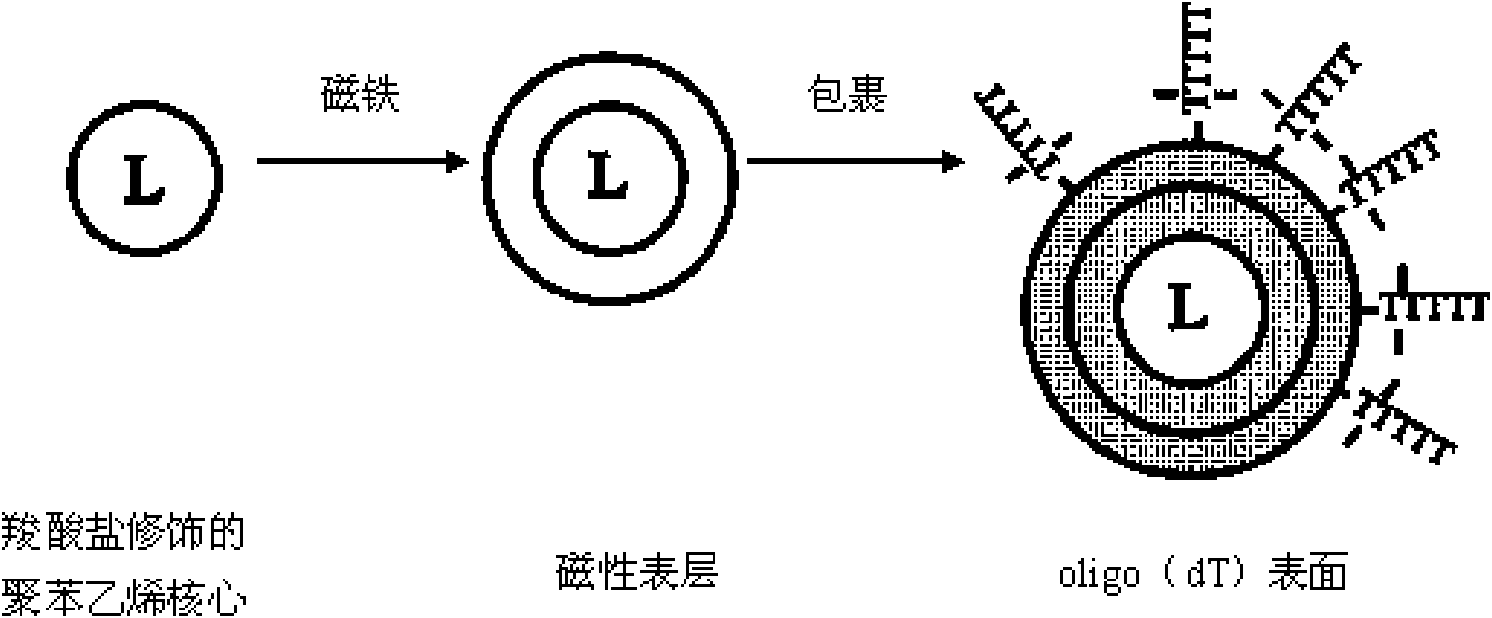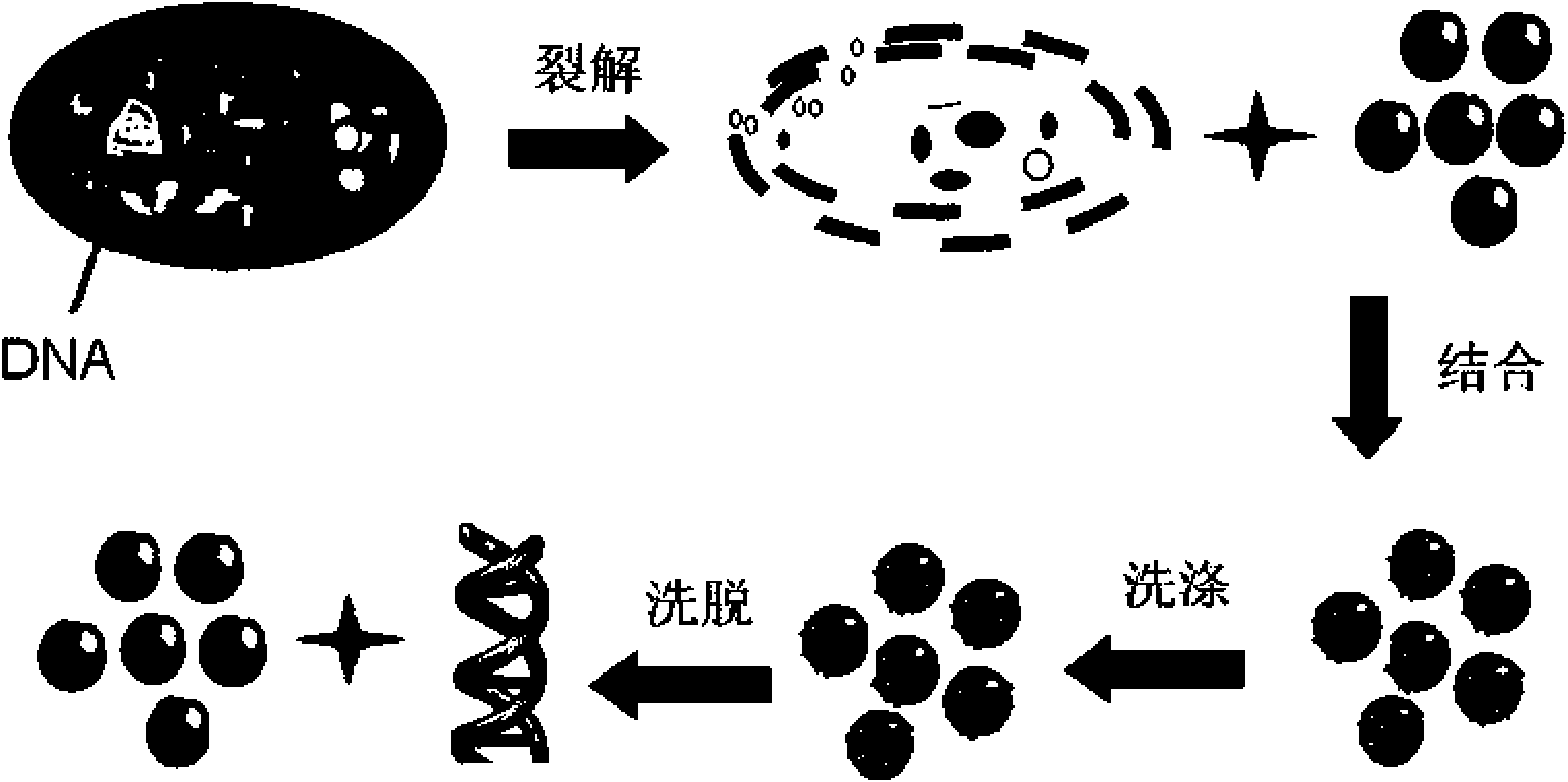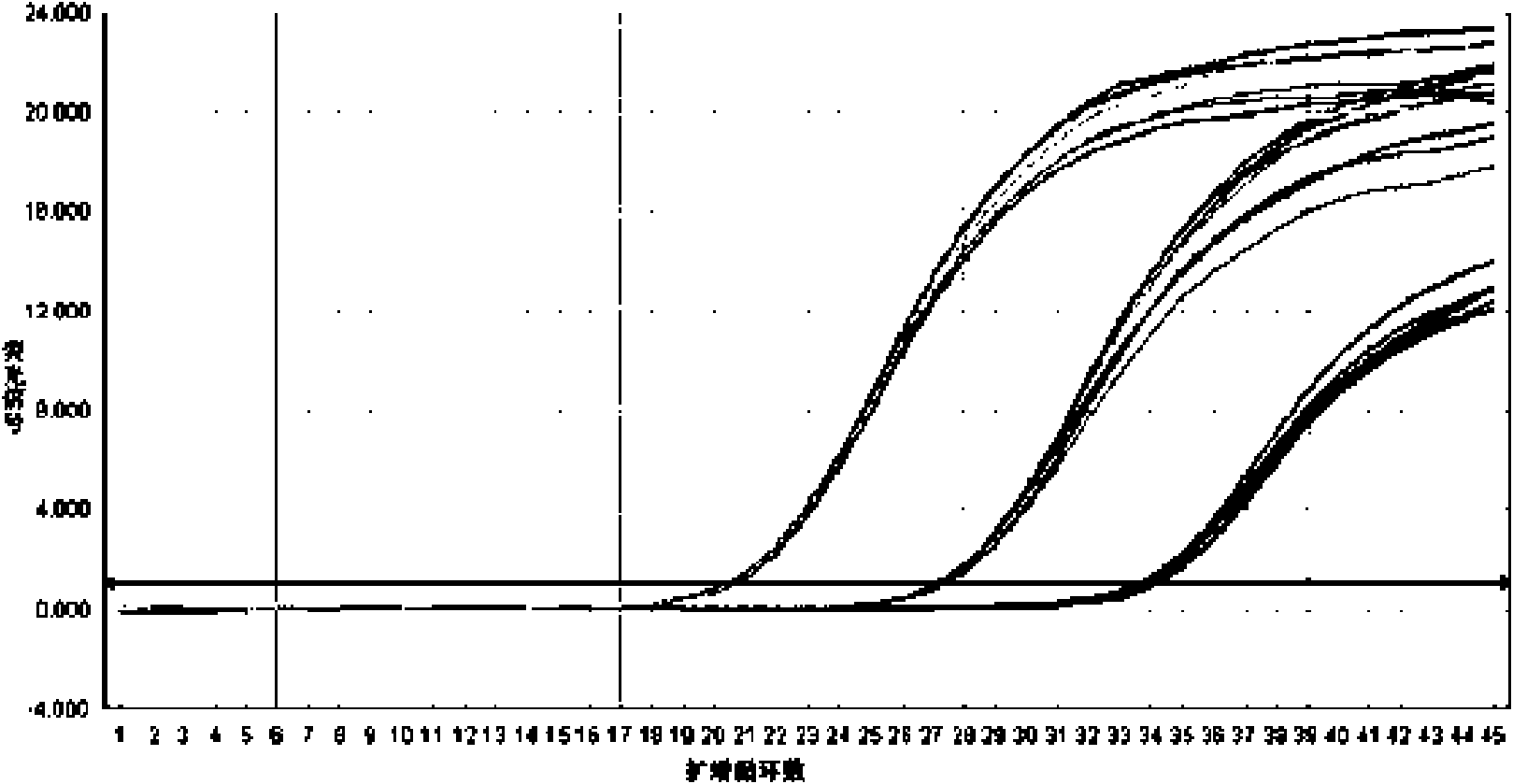Method for extracting and purifying nucleic acid from samples by magnetic beads
A magnetic bead and nucleic acid technology, applied in the field of nucleic acid extraction and purification, can solve the problems of unfavorable identification molecule activity preservation, low adsorption efficiency, narrow application range, etc., and achieve the effects of saving manpower, fast operation, and convenient transportation
- Summary
- Abstract
- Description
- Claims
- Application Information
AI Technical Summary
Problems solved by technology
Method used
Image
Examples
Embodiment 1
[0051] Example 1: Separation and purification of HBV DNA in serum by peptide-oligonucleotide magnetic beads
[0052] The present embodiment comprises the following steps: (1) peptide-oligonucleotide modified magnetic beads: with γFe 2 o 3 and Fe 3 o 4 The homogeneous, superparamagnetic, and single-divergent polymeric microspheres synthesized by magnetic materials are used as the magnetic source. Each microsphere is coated with a layer of polystyrene, and the magnetic polymer carrying carboxylate is prepared by emulsion polymerization or dispersion polymerization. Microspheres; carboxylate-modified polystyrene core particles coated with a magnet, oligo(dT) 14 Then covalently bonded to this surface, nucleic acid molecules can be well anchored on this oligonucleotide [see Figure 1 (a)]; (2) Cell lysis: add 200 μl of HBV DNA positive serum to a 1.5ml centrifuge tube , followed by adding 300 μl of lysate, the lysate is composed of 0.5% (W / V) SDS, 2% (V / V) Triton X-100, 1mol / L G...
Embodiment 2
[0054] Example 2: Separation and purification of HBV DNA in serum and detection by fluorescent quantitative PCR
[0055] According to the method described in Example 1, after adsorption and washing, use a pipette to take 50 μl of PCR reaction solution and repeat several times to completely elute the magnetic beads adsorbed on the wall of the centrifuge tube, transfer them to the PCR reaction tube, and use fluorescent quantitative PCR instrument for quantitative detection.
[0056] 1) Three concentrations of HBV DNA-positive serum calibrated by the China Institute for the Control of Biological Products (National Institute for the Control of Hepatitis B Virus) nucleic acid quantitative standards were used as samples to be tested, and the concentrations were 5.0×10 6 IU / ml, 5.0×10 4 IU / ml, 5.0×10 2 IU / ml, the experiment was repeated 8 times for each concentration, and the results are shown in the table below.
[0057]
[0058] Such as figure 2 As shown, using the method of...
Embodiment 3
[0065]Embodiment 3: The peptide-oligonucleotide magnetic bead HBV DNA extraction of the present invention compares with the magnetic bead method existing on the market to separate and purify nucleic acid comparison
[0066] Using magnetic beads with three different treatment methods and the magnetic beads treated with peptide-oligonucleotide of the present invention to separate and purify HBV DNA in serum and perform fluorescence quantitative PCR detection comparison. The three kinds of magnetic beads are: Invetrogen Dynal magnetic beads, Carboxylate (carboxylate) speed magnetic beads, and Carboxylate magnetic beads.
[0067] The HBV-positive serum calibrated with the Hepatitis B virus (HBV) nucleic acid quantitative standard of the China National Institute of Inspection and Quarantine was used as the initial sample, and the gradient was diluted to 10 5 IU / ml, 10 4 IU / ml, 10 3 IU / ml, 10 2 IU / ml, 10IU / ml, 5 positive sera and one negative sera are used as samples to be tested...
PUM
 Login to View More
Login to View More Abstract
Description
Claims
Application Information
 Login to View More
Login to View More - R&D
- Intellectual Property
- Life Sciences
- Materials
- Tech Scout
- Unparalleled Data Quality
- Higher Quality Content
- 60% Fewer Hallucinations
Browse by: Latest US Patents, China's latest patents, Technical Efficacy Thesaurus, Application Domain, Technology Topic, Popular Technical Reports.
© 2025 PatSnap. All rights reserved.Legal|Privacy policy|Modern Slavery Act Transparency Statement|Sitemap|About US| Contact US: help@patsnap.com



